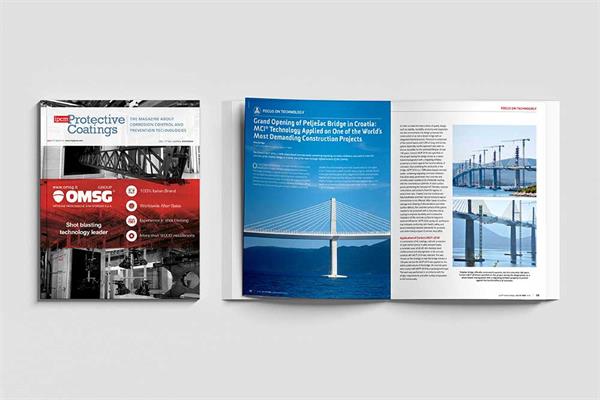
Read the latest edition of the magazine dedicated to corrosion protection and control technologies in the heavy industry.
Introducing a new technology into a well-defined market is an insidious process that should be thoroughly pondered. Although with the best of intentions, however, sometimes companies try to speed things up, normally with disastrous results.
It may be that the new technology is not perfectly suited to replace the existing one yet (due to development reasons, for example) or is not applicable in the same way to all sectors of the concerned market. The best option, therefore, is not abrupt replacement of the existing technology, but rather a period of coexistence, which enhances the advantages and technical aspects of the new technology without disparaging the old one aiming at its premature complete elimination.
This is what has happened with water-based paints in the world of corrosion protection. Although there exist hundreds of successful applications of water-based paints for steel corrosion protection worldwide, with proven durability in compliance with the strictest international standards such as NORSOK and ISO 12944, this coating technology is suffering from the haste with which some opinion leaders in the market tried to impose it from its very beginnings as a tout court
alternative to solvent-based products, emphasising its (indisputable) advantages in terms of sustainability, health, and safety.
Today, as a consequence, in contrast to what happened in the wood sector and in that of metal for the general industry, water-based coatings are struggling to firmly establish themselves in the corrosion protection market, partly due to a lack of knowledge among users caused by a very conservative mentality and partly due to some application issues caused by that very haste. This has favoured high solid and powder products.
Precisely powder coatings could now embark on this virtuous path towards inclusion in the corrosion protection market, despite the fact that they do not appear among the technologies suggested by ISO 12944 yet and that they are still used almost exclusively indoors, rather than outdoors.
There are still steps to be taken to create products that guarantee the same protection degree as solvent-based, high solid, or very high solid liquid painting systems, and, above all, products that are maintainable over time, which is currently another major technological limitation of powders. However, virtually all powder coating manufacturers have been offering corrosion protection primers for years now, whereas numerous dual-coat systems (dry-on-dry or dry-on-fused) providing very good corrosion protection have become popular in the last five years.
In the face of a market that demands ever-increasing outdoor durability of components and structures, it is still going to take a long time to develop protective powders that are suitable for the highest ISO 12944 categories, as well as to create the industrial culture necessary to understand that surface preparation (namely, sandblasting and shot blasting) is essential to apply a high-quality and durable powder coatings.
Let us just hope that no one makes the same marketing mistake that was made twenty years ago with water-based coatings, because looking for new technologies to differentiate one’s company within the market is the most important lever for development, as shown by some of the articles in this issue of ipcm®_Protective Coatings. At the same time, as one of Southern Europe’s leading protective coating applicators said, this has to be done consciously and knowing the performance levels and limits of the new technology to be implemented.
READ THE MAGAZINE